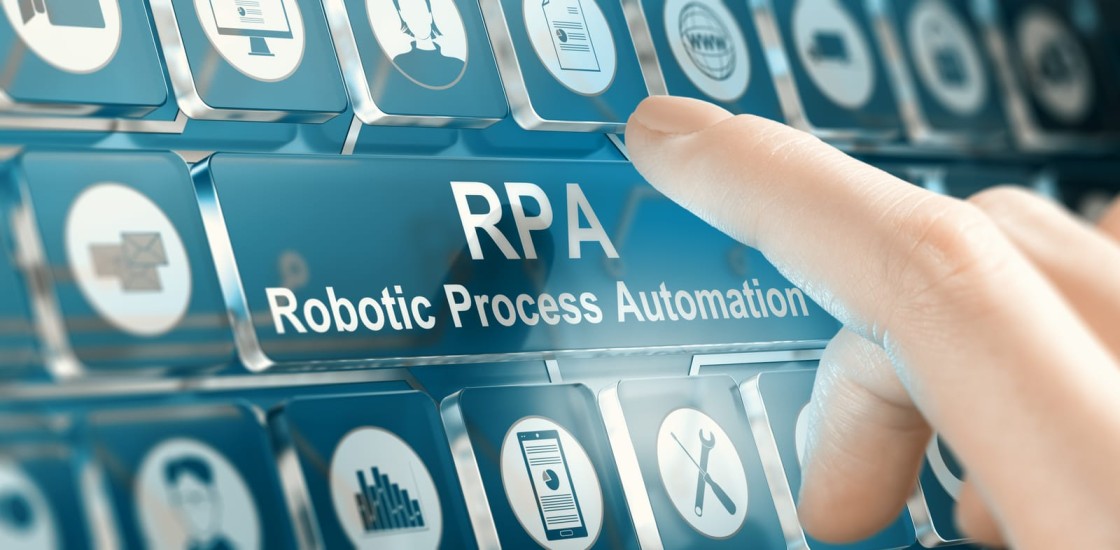The Ultimate Guide to Choosing the Right RPA Software for Your Business
Automation has quickly evolved from a luxury to a must-have for businesses looking to stay ahead. RPA solutions are transforming how organizations operate, helping them streamline repetitive tasks, minimize errors, and unlock the potential of human resources for more strategic roles.
But with a wide range of RPA tools on the market, choosing the right one for your organization can be a daunting task. This guide is here to simplify that process, helping you select the automation solution that aligns perfectly with your business’s needs and goals.
Understanding Your Business Requirements
Before diving into the world of automation platforms, it’s crucial to have a clear understanding of what your business needs to accomplish. Identifying the right RPA solution for your organization starts with assessing your specific requirements.
Process Assessment and Identification
The journey begins with identifying which processes are suitable candidates for automation. Not all business processes will benefit equally from RPA implementation. Ideal candidates typically share these characteristics:
- Repetitive and rule-based tasks requiring minimal human judgment
- High-volume activities that consume significant employee time
- Processes with structured inputs and deterministic outcomes
- Tasks prone to human error that impact quality or compliance
Start by mapping your business processes and categorizing them based on complexity, frequency, and strategic importance. Simple processes with high execution frequency often provide the quickest returns on automation investments.
Examples include data entry, report generation, invoice processing, and customer onboarding. Once you’ve identified these processes, you can begin considering the best RPA solutions for your needs, whether that’s an AI RPA solution or a more traditional approach.
Technical Requirements Mapping
Once you’ve identified candidate processes, assess your technical landscape to understand integration requirements:
- System Compatibility: What existing applications will your RPA solution need to interact with? ERP systems, legacy applications, web platforms, and databases all present different integration challenges.
- Security and Compliance: Does your industry have specific regulatory requirements? Healthcare, finance, and other regulated sectors may need solutions with robust security features.
- Infrastructure Considerations: Will your automation run on-premises or in the cloud? This decision impacts implementation timelines, maintenance requirements, and total cost of ownership.
Skills Assessment
Take an honest inventory of your organization’s technical capabilities:
- Does your team have programming experience, or would they benefit from low-code platforms?
- What level of training and support will users need?
- Do you have the capacity to build a center of excellence for automation internally?
Organizations with limited technical resources may benefit from the best RPA software offerings with intuitive interfaces and extensive support, while technically advanced teams might prioritize customization capabilities and development flexibility. If your business faces specific RPA challenge solutions, it’s essential to choose a platform that can address those unique issues efficiently

Key Features and Capabilities to Consider
With your requirements defined, it’s time to evaluate the features offered by automation platforms. The right RPA software will depend on your needs, but here are the key features to consider:
- Process Recording and Development: Choose intuitive RPA software that allows quick configuration of workflows. Some platforms offer drag-and-drop interfaces, while others require more technical coding.
- Intelligent Document Processing: For document-heavy processes, intelligent document processing is essential. Top RPA software can use AI-powered recognition to automate tasks like invoice processing and data extraction.
- Cognitive Abilities and Machine Learning: Some platforms integrate machine learning to handle exceptions and adapt to changing conditions, making them suitable for complex tasks.
- Centralized Management and Monitoring: RPA software companies offer centralized control panels for efficient deployment and monitoring of automation across the organization, with dashboards for tracking performance and exceptions.
- Scalability: Choose the best RPA software that can scale with your automation needs, supporting hundreds or thousands of processes without performance degradation.
- Deployment Flexibility: Consider cloud-based or on-premise options, depending on your infrastructure needs and regulatory requirements. Also, decide whether you need attended or unattended automation.
- Licensing Models: Choose a pricing model that aligns with your usage patterns, whether it’s based on robots, processes, or consumption.
Vendor Assessment
When evaluating automation providers, several factors should be considered. First, the vendor’s reputation plays a crucial role. Established vendors often offer stability and a comprehensive set of features, but it’s important to assess how well the platform aligns with your specific needs.
Next, consider the customer support provided by the vendor. Access to training materials, technical documentation, and responsive customer service can significantly influence the success of your implementation.
Finally, evaluate the community and ecosystem surrounding the vendor. A strong partner ecosystem and an active community can offer valuable resources, accelerators, and best practices to help you throughout your automation journey.
Comparing Traditional RPA and Python-Based Solutions
When considering automation platforms, it’s useful to understand the differences between traditional commercial RPA tools and Python-based solutions. Here’s a comparison:
1. Setup and Flexibility
- Traditional RPA: Typically offers a quicker setup with pre-built components, making them easier to deploy for standard, rule-based business processes.
- Python-Based RPA: Requires more initial development but offers greater flexibility and customization, allowing businesses to tailor solutions to their specific needs.
2. Licensing and Costs
- Traditional RPA: Often uses a subscription-based model with per-robot licensing fees. This model works well for businesses with predictable automation needs.
- Python-Based RPA: Frequently utilizes open-source components, reducing licensing costs and offering greater control over the software environment.
3. Ease of Use vs. Customization
- Traditional RPA: Tends to be easier to use with low-code options and user-friendly interfaces, making it accessible for non-technical users.
- Python-Based RPA: Requires programming knowledge but offers powerful customization options, making it ideal for businesses with technical teams that need a high level of control.
4. Integration and Data Handling
- Traditional RPA: Strong in integrating with standard enterprise applications, which makes it ideal for businesses with common integration needs.
- Python-Based RPA: Excels at integrating with APIs, databases, and technical systems, which is beneficial for businesses with more complex or unique integration requirements.
5. Analytics and Maintenance
- Traditional RPA: Comes with built-in analytics and dashboards, providing insights into performance, exceptions, and process optimization.
- Python-Based RPA: Leverages powerful data science libraries for more advanced data analysis, allowing businesses to combine automation with deep analytics.
Making Your Decision: A Framework for Evaluation
To systematically evaluate automation solutions against your requirements, consider this approach:
- Create a weighted scorecard: Assign importance values to different features based on your specific needs.
- Rate each platform: Score each solution on how well it meets your criteria.
- Calculate weighted scores: Multiply ratings by importance weights to identify the best overall match.
- Request demonstrations: See the top contenders in action using your actual business scenarios.
- Check references: Speak with organizations similar to yours about their implementation experiences.
This structured approach helps cut through marketing claims to identify which automation solution truly aligns with your organizational requirements.

Future-Proofing Your Automation Investment
The automation landscape is evolving rapidly. When evaluating the best RPA software options, consider how well the platform adapts to emerging trends. AI integration is increasingly common, with solutions handling more complex tasks. Some platforms now include process discovery tools that automatically identify automation opportunities by analyzing user activities.
Low-code/no-code development is making automation more accessible, allowing businesses to scale with limited technical resources. Also, assess how your solution fits into the broader concept of hyperautomation, integrating technologies like process mining and advanced analytics for a comprehensive automation strategy.
Python's Role in the Future of Automation
Python is well-suited for intelligent automation due to its dominance in AI-powered automation and machine learning. Its flexibility enables businesses to combine automation with unified analytics, optimizing processes through data-driven insights.
The Python community continuously develops new tools, keeping it ahead of commercial platforms. Additionally, Python’s ability to integrate with emerging technologies like blockchain and IoT expands its role in automation.
For example, a financial services company used Python-based automation to process loan applications and improve risk assessments through machine learning, an advantage that traditional top RPA software struggled to achieve.
Conclusion
Selecting the right automation platform for your business involves balancing technical capabilities, ease of use, total cost of ownership, and alignment with your strategic goals. By carefully assessing your requirements, evaluating available solutions, and planning for thoughtful implementation, you can maximize your automation investment.
Successful automation goes beyond technology—it’s about empowering your team to work more strategically and enhancing the customer experience. The ideal solution enables your organization to operate more efficiently now while preparing for future challenges.
When starting your automation journey, focus on clear objectives, choose a solution tailored to your needs, and approach implementation with a balance of technical rigor and attention to human factors. With the right foundation, your automation program can deliver significant value, extending beyond simple cost savings.
Whether you choose a commercial RPA platform from established RPA software companies or a Python-based approach, the key is finding the solution that aligns with your business requirements, technical environment, and strategic goals. At PythonRPA, we aim to help organizations understand and leverage automation technologies, particularly Python-based solutions. Explore our resources to learn more about implementing Python RPA in your organization.